1983 Mercedes Benz 300CD Turbo Coupe
- Price:
- Location: West Chester, Pennsylvania, United States
- Condition: Used
- Make: Mercedes-Benz
- Model: 300-Series
- SubModel: CD
- Type: Coupe
- Trim: Coupe
- Year: 1983
- Mileage: 186,140
- VIN: WDBAB53A9DB003892
- Color: Blue
- Engine size: 300 Turbo
- Number of cylinders: 5
- Power options: Air Conditioning, Cruise Control, Power Windows
- Fuel: Diesel
- Transmission: Automatic
- Drive type: RWD
- Interior color: Tan
- Options: Leather Seats, Sunroof
- Vehicle Title: Clear
1983 Mercedes-Benz 300-Series CD Description
Up for sales is this beautiful 1983 Mercedes 300CD Turbo in the best color combo of Blue (exterior) and Tan (interior). We have had this car just a couple years but rarely drove it and ALWAYS kept it in the garage and it has Very low mileage for a 32 year old car. There is NO RUST on the car (which is commonfor these cars). A/C works great! We even have thereceipts from the original owner. Most of these cars have rust and oil leaks. No rust on this car AND we had all the oil leaks fixed. The diesel's are notorious for leaking - there are no leaks - NO oil drops in our garage! Also, NO CRACKS in the dash, which is also a common problem on these cars.
We had the regulator replaced in the rear right side window along with the support rails, new motor on the front passenger window, new motor mounts, new fuel delivery pump and new A/C compressor. Just put in a new battery this week.
Of course, this is a 32 year old car so the wood console at the shifter is not in the greatest shape, the sun roof is not working although you can hear the motor when you push the button (we didn't really care about using that so never had it checked), the paint on the trunk has chips in it, the antenna doesn't go down probably needs some lube and the cruise control is sporadic. Note also that the wheels are not in great shape.
As you can see in the video, this cars moves. The motor is strong and you don't have to worry about taking off in traffic! Fun to drive on those curvy country roads and a comfortable ride. This is the 3rd 300CD we have had, they arerare and a great reliable car and they look so nice (compared to the 4 door).
Thank you for looking and we hope that someone buys this that has a passion for these vehicles and will take good care of it.
Check out the videos...
https://youtu.be/2KnY9AZ821U
https://youtu.be/nARnHsapL-0
https://youtu.be/nARnHsapL-0
History of the 1976-1985 Mercedes-Benz W123
By the admission of Mercedes-Benz, the W123 platform was not revolutionary, but “rather a thoroughly mature mid-range car combining the latest engineering with tried and tested design features”. This sober summary reflects the lasting legacy of the W123 – a solidly built automobile with timeless poise and class.
Introduced in 1976, the W123 platform included a four door sedan and sleek coupe. The W123 replaced the aging W114 and W115 platforms (also known as the “Stroke Eights”), which at the time were the most successful Mercedes passenger cars to date. The incoming W123s were styled after the new S-Class, which was a clear break with the classical style of the Stroke Eight. The W123 offered a longer wheelbase, a wider track, and a larger body. The 280C coupe was 85 mm shorter than the sedan, and was absent a B-pillar, which lent the car a unique and sporty style. The coupe and sedans were soon joined by the diesel-powered 300TD station wagon in 1978 – the first Mercedes wagon. The cars were immensely popular and less than a year into production many dealers had a 12-month waiting list. Cars for immediate purchase were offered in a sort of black-market – at a healthy premium. The station wagon, or “touring” as it was called by Mercedes, was on a backlog of three years by the 1980s. This is a testament not only to the popularity of the touring, but also Mercedes’ creation and then domination of the luxury or “lifestyle” station wagon market.
In the U.S., the W123 was available in all three body styles, but due to stricter emissions regulations, a limited range of engines. The naming convention was straightforward, with the first two numbers representing displacement in liters and the letters representing body style and fuel. No letters indicate a carbonated engine (i.e., the 230 carried a 2.3-liter inline four available from 1977-78), D for Diesel, E for fuel injection, T for touring or station wagon, and C for coupe. The 300D (3.0-liter inline 5-cylinder diesel) was available with a turbocharger in 1981, and labeled as such. Top of the range was the 280E and 280CE, both of which featured 2.8-liter, inline 4-cylinder, fuel injected engines capable of 142 hp.
The W123 platform came equipped with many optional and standard class-leading features. The car was better engineered for crash protection – accomplished with a strengthened passenger cage and reinforced roof. Optional was a safety steering column engineered to crumple rather than enter the cabin in a head-on collision. From 1980 on, the W123 offered optional anti-lock brakes as well as an optional air bag after 1982. The 1982 model year also marked a major facelift for the W123 – all models were equipped with rectangular broadband headlights and power steering was offered standard across the range.
When the W123 went out of production in 1986 it had surpassed the Stroke Eight as the bestselling Mercedes-Benz with more than 2.5 million cars sold. Mercedes built the car to last, and many are still on the road today. As a testament to the car’s longevity, it is popular in Africa as a bush taxi, covering thousands of miles of rough roads with only basic maintenance. The 3.0-liter inline 5 diesel in the 300D, while lacking in power, is considered to be one of the most reliable engines ever built. The timeless design is sure to last as long as the car itself, making this car a classic that is here to stay.
 1983 Mercedes Benz 300CD Turbo CUSTOM COUPE
1983 Mercedes Benz 300CD Turbo CUSTOM COUPE
Mileage: 200000
 1983 Mercedes Benz 300CD turbo Diesel 2dr Coupe / World Wide Shipping
1983 Mercedes Benz 300CD turbo Diesel 2dr Coupe / World Wide Shipping
Mileage: 267,631
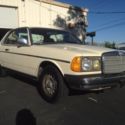 1983 Mercedes Benz 300CD turbo Diesel 2dr Coupe / 30 day Layaway World Shipping
1983 Mercedes Benz 300CD turbo Diesel 2dr Coupe / 30 day Layaway World Shipping
Mileage: 267,631
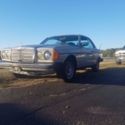 1983 mercedes-benz 300cd coupe, NADA avg retail $8400! turbo diesel. Runs great!
1983 mercedes-benz 300cd coupe, NADA avg retail $8400! turbo diesel. Runs great!
Mileage: 9,999,999
 1983 Mercedes Benz 300CD Turbo Diesel
1983 Mercedes Benz 300CD Turbo Diesel
Mileage: 258,000
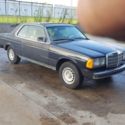 Mercedes Benz 1983 300CD Turbo Diesel
Mercedes Benz 1983 300CD Turbo Diesel
Mileage: 224,541
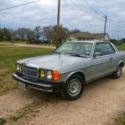 1983 mercedes-benz 300cd 3.0l w123 coupe
1983 mercedes-benz 300cd 3.0l w123 coupe
Mileage: 177000
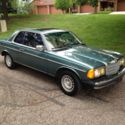 1983 Mercedes Benz 300CD Coupe 2-Door Diesel
1983 Mercedes Benz 300CD Coupe 2-Door Diesel
Mileage: 212,853
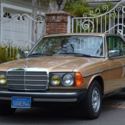 1983 Mercedes 300cd turbo diesel coupe only 162k mls. w. leather + all records
1983 Mercedes 300cd turbo diesel coupe only 162k mls. w. leather + all records
Mileage: 162,000
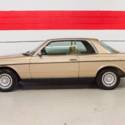 1983 Mercedes-Benz 300-Class 300CD 2dr Turbodiesel Coupe Automatic 4-Speed RWD
1983 Mercedes-Benz 300-Class 300CD 2dr Turbodiesel Coupe Automatic 4-Speed RWD
Mileage: 118,750






